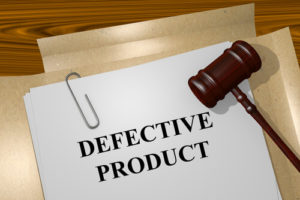Why Hire Us?
- 50 years of combined litigation experience
- We only get paid when we WIN your case
- Our personal attention to YOUR case distinguishes us from our competitors
- When it comes to fighting insurance companies, you cannot afford to hire inexperienced attorneys
What Clients Say About Us
Sacramento Product Liability Lawyer

All manufacturers of products and those involved in the stream of commerce of those products are potentially liable to you if you are injured as a result of a malfunctioning or otherwise defective product.
This duty is owed not only to the person or persons who purchased the product, or to the particular person using the product at the time, but to bystanders and others who may suffer injuries as a result of the malfunctioning or defective product.
A product liability case is premised on two legal theories: strict liability and negligence.
Strict liability can be based on a number of different factors depending on the circumstances of your case.
A defendant may be held strictly liable for a manufacturing defect if the product that injured someone differs from the manufacturer’s design or specifications or from other typical units of the same product line. This often occurs when a manufacturer has a poor quality control system in place, which allows some defectively made and unsafe products to enter the stream of commerce, which differ in some aspect from the intended design of the product.
To make a prima facie case against a defendant based on a manufacturing defect, the plaintiff must show that he or she was injured while the product was being used in an intended or reasonably foreseeable manner. If this prima facie burden is met, the burden of proof shifts to the defendant to prove that the plaintiff’s injury resulted from a misuse of the product.
A defendant may also be held strictly liable for placing products into the stream of commerce that have a flaw in their design which causes the products to be unsafe.
There are two tests applicable to design defect cases: the consumer-expectation test and risk-benefit test. These tests provide alternative means for a plaintiff to prove design defect. A product may be defective under the consumer expectation test even if the benefits of the design outweigh the risks. On the other hand, a product may be defective if it satisfies consumer expectations but contains an excessively preventable danger in that the risks of the design outweigh its benefits.
Whether the jury should be instructed on either the consumer expectations test or the risk/benefit test depends upon the particular facts of the case. The trial court must initially determine whether the product is one about which the ordinary consumer can form reasonable minimum safety expectations. If the court finds there is sufficient evidence to support a finding that the ordinary consumer can form reasonable minimum safety expectations, the jury then must decide whether the product failed to perform as safely as an ordinary consumer would expect when the product is used in an intended or reasonably foreseeable manner.
Under the risk-benefit test, once the plaintiff establishes the product is defective by showing that its design proximately caused his or her injury, the defendant must establish that on balance the benefits of the challenged design outweigh the risk of danger inherent in such design. In such case, the jury must evaluate the product’s design by considering the gravity of the danger posed by the design, the likelihood such danger would occur, the feasibility of a safer alternative design, the financial cost of an improved design, and the adverse consequences to the consumer resulting from an alternative design.
A defendant may also be strictly liable to someone injured by its product for failing to warn consumers of various hazards when using its product. Even a product flawlessly designed and produced may be rendered “defective” because consumers are not provided with suitable warnings of the hazards associated with product. The purpose of requiring adequate warnings is to inform consumers about a product’s hazards and faults of which they are unaware, so the consumer may then either refrain from using the product altogether or avoid the danger by careful use.
A defendant is also negligent if it fails to use the amount of care in designing, manufacturing, inspecting, installing or repairing the product to avoid exposing users of the product from foreseeable risk of harm. In determining whether a defendant used reasonable care, what the defendant knew or should have known about the likelihood and severity of potential harm from the product is balanced against the burden of taking safety measures to reduce or avoid the harm.
Get Started with your CaseCall Us at (916) 325-9010
Product liability cases can be extremely complex and in many cases involve multiple defendants who contributed to the marketing and sale of a defective or dangerous product, from the manufacturers of component parts that went into the product to the assemblers of the product to the dealer or retailer that ultimately sold and delivered the product to the consumer.
With years of experience and numerous product liability cases under its belt, Miner & Kelly has the experience and expertise you need if you or someone you know has been injured as the result of a defective product or a product that did not have adequate warnings provided with it.
